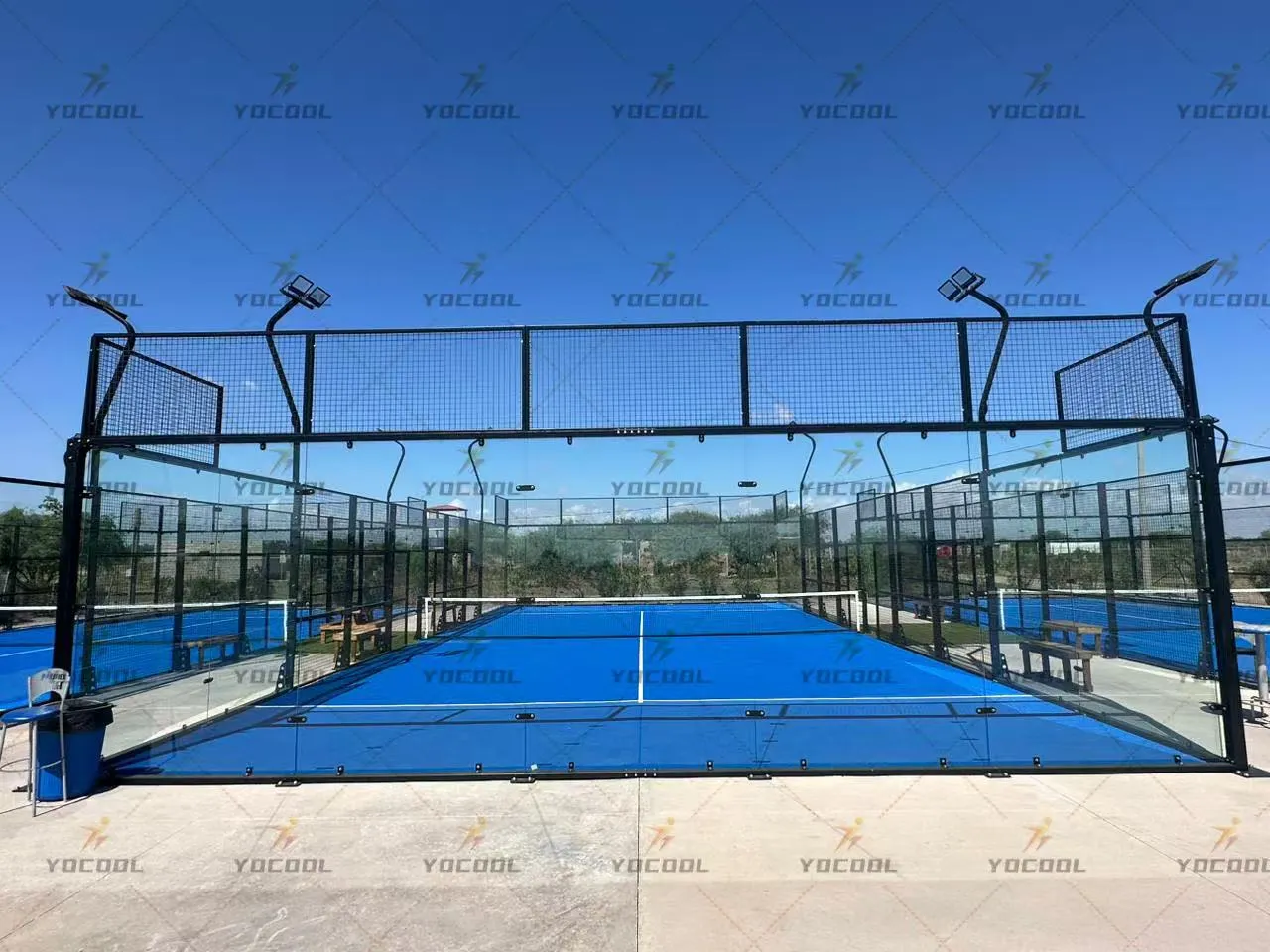

Padel has rapidly emerged as a global sport, blending elements of tennis and squash while introducing unique rules and court dynamics. Central to its appeal is the padel court, a compact, enclosed space with walls that redefine gameplay. This article explores the sport’s distinctive regulations and how they diverge from tennis and squash, while addressing practical considerations like padel court cost to build and what it takes to build padel court structures that meet professional standards.

The padel court is a 10m x 20m enclosed rectangle with walls of glass or solid materials, which players use to rebound the ball during rallies. Unlike tennis, where shots must clear the net and land within baseline boundaries, padel allows walls to be integrated into play. This structural difference creates rules such as:
Ball Contact with Walls: After bouncing on the ground, the ball can strike any wall (including the opponent’s side) and remain in play.
Serving Rules: Serves must be underhand and bounce diagonally into the opponent’s service box, similar to squash but distinct from tennis’ overhead serves.
Materials like tempered glass for walls and artificial turf for surfaces ensure durability and consistent ball bounce. The enclosure also demands precise net tension—typically lower than tennis nets—to accommodate wall rebounds.
To build padel court facilities that align with official rules, focus on these elements:
Enclosure Materials: Walls must combine transparency (for spectator visibility) and impact resistance. Polycarbonate or laminated glass panels are common, supported by galvanized steel frames to withstand ball strikes.
Surface Composition: Hybrid surfaces—often artificial turf with sand infill—ensure grip and shock absorption, differing from tennis’ hardcourt or squash’s smooth plaster.
Regulations mandate a 4m ceiling height for indoor courts, contrasting with squash’s taller requirements. When planning to build padel court setups, consider local climate: outdoor courts require UV-resistant nets and rust-proof fixtures.
The padel court cost to build varies based on materials and scale. Key factors include:
Enclosure Expenses: Glass walls increase costs but enhance aesthetics and compliance with professional standards. Mesh or acrylic alternatives reduce padel court build cost but may lack durability.Surface Options: Artificial turf with shock-absorbing underlayers is costlier than concrete but essential for injury prevention and rule-compliant ball bounce.
A mid-range outdoor padel court cost to build typically includes steel framing, polycarbonate walls, and synthetic turf, balancing longevity and affordability. Indoor facilities add climate control and lighting, raising the cost of building a padel court but enabling year-round use.
The cost of building a padel court is influenced by maintenance needs and material lifespan. For example:Low-Maintenance Materials: Powder-coated steel frames and UV-stabilized nets reduce long-term upkeep, offsetting higher initial costs.
Modular Designs: Prefabricated panels cut construction time and labor expenses, making the padel court build cost more predictable.
While a basic court may prioritize affordability, investing in anti-slip surfaces and reinforced walls ensures compliance with international padel federations’ standards, enhancing resale value and player safety.
The padel court’s enclosed walls and smaller dimensions encourage strategic play using rebounds, unlike tennis’ open layout. The underhand serve and double-bounce rule further differentiate scoring dynamics.
To build padel court facilities, prioritize tempered glass walls, corrosion-resistant steel frames, and sand-infilled artificial turf. These materials ensure regulatory compliance and weather resilience.
The padel court cost to build is often lower than tennis courts (due to smaller size) but higher than squash courts because of wall enclosures. However, padel’s growing popularity can yield faster ROI through membership fees or rentals.
Yes, using prefabricated panels and recycled polycarbonate for walls can lower the cost of building a padel court. Opting for modular designs also minimizes labor expenses.
In the padel court, nets are 0.88m at the center—lower than tennis nets—to accommodate wall rebounds and underhand serves. Proper tensioning ensures fair play and aligns with official rules.
Understanding the unique rules of padel—shaped by the padel court’s enclosed design—is key to appreciating its strategic depth. Whether planning to build padel court facilities or evaluating the padel court cost to build, prioritizing durable materials like tempered glass and steel ensures regulatory adherence and long-term value. By balancing the cost of building a padel court with quality construction, operators can create spaces that cater to both casual players and competitive athletes, driving the sport’s global growth.
Starts with Strategic Padel Court Solutions
Sports Facilities with Innovative Padel Court Construction
Revolutionize Sports Facilities with Custom Padel Court Construction
Master Industrial Racquetball Performance with Professional Equipment
Industrial Expansion Begins with Strategic Padel Court Construction Investments
Construct Future-Ready Sports Facilities with Industrial-Grade Padel Courts